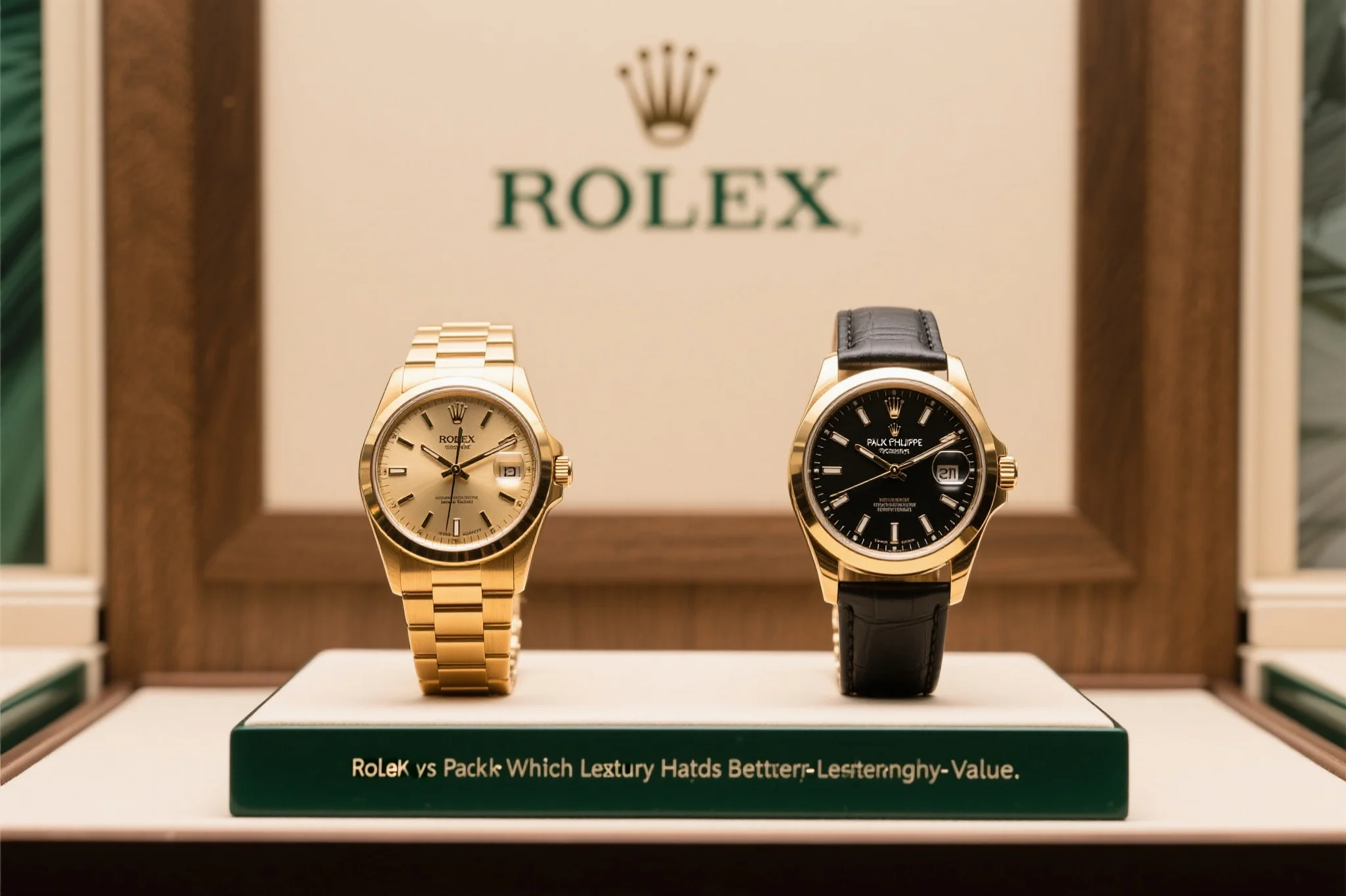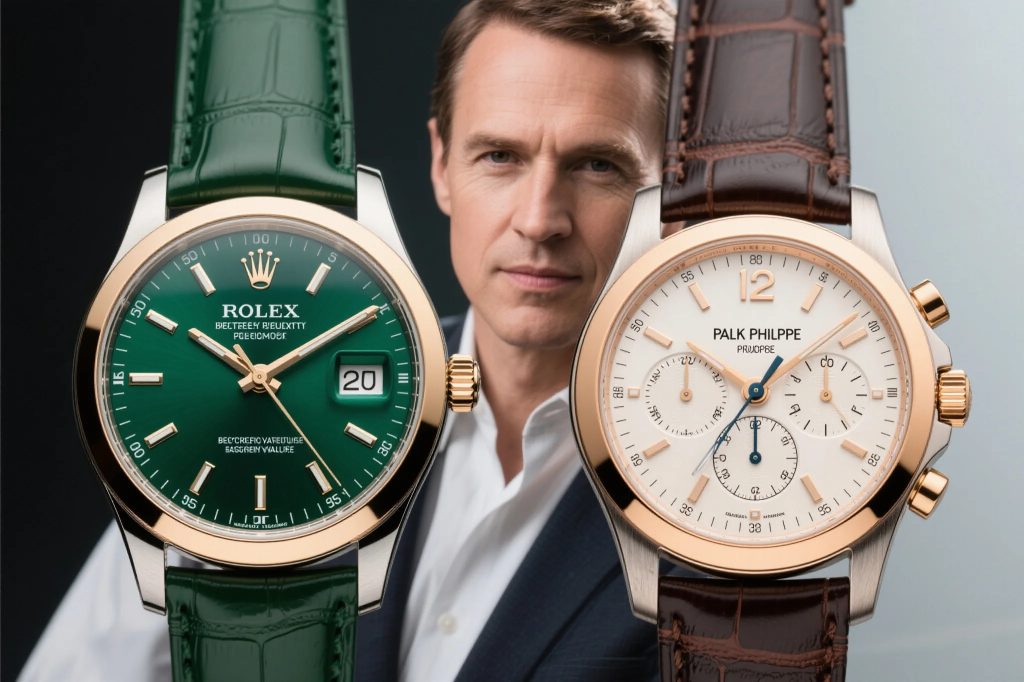
The debate between Rolex and Patek Philippe as premier luxury watches for investment purposes has intensified among HNW collecting circles. Both brands command exceptional resale value, but their performance characteristics differ significantly, appealing to distinct segments of serious collectors. Understanding these nuances is crucial for investors allocating capital to horological assets within a diversified luxury watches portfolio. For those exploring alternative investment options, this comparison provides essential insights.
Historical Performance: Tracking Decades of Value Appreciation
Examining the long-term resale value trajectories of Rolex and Patek Philippe reveals fascinating patterns in the luxury watches market. Patek’s ultra-high-end complications have demonstrated extraordinary appreciation, with certain rare models achieving auction prices exceeding 100 times their original retail value. Meanwhile, Rolex sports models like the Daytona and Submariner have shown remarkably consistent growth, making them favorites among HNW collecting portfolios seeking stable returns. The brands’ differing approaches to production volumes and model discontinuations create distinct investment dynamics that collectors must understand. Discover more about the history of watch investing and its lessons for today’s collectors.
Market Liquidity and Trading Dynamics Compared
The secondary market behavior of Rolex versus Patek Philippe highlights crucial differences in how these luxury watches function as tradable assets. Rolex enjoys unparalleled liquidity, with certain professional models trading almost like commodities in the HNW collecting circuit. This liquidity comes from the brand’s broader recognition and more accessible price points. In contrast, Patek Philippe‘s exceptional resale value often comes with longer holding periods, as finding buyers for six-figure timepieces requires patience and specialized networks. The most successful collectors balance both brands to optimize portfolio liquidity while maintaining exposure to top-tier appreciation potential. Learn about navigating liquidity in high-end collectibles.
Production Philosophy and Scarcity Drivers
The fundamental differences between Rolex and Patek Philippe manufacturing approaches create varying scarcity dynamics that impact resale value. Patek Philippe‘s meticulous hand-finishing and limited production runs (particularly for grand complications) ensure extreme rarity, a key driver in the luxury watches investment thesis. Rolex, while producing significantly more watches annually, carefully controls distribution and periodically discontinues models, creating artificial scarcity that supports HNW collecting demand. Savvy investors analyze production figures, discontinuation patterns, and waiting list dynamics to identify future value appreciation opportunities in both brands. Explore our guide to investing in scarcity across luxury categories.
Condition and Provenance: Impact on Long-Term Value
In the realm of luxury watches, condition and provenance affect Rolex and Patek Philippe differently when assessing resale value. Patek’s complicated movements often require more meticulous preservation, with original components and service history dramatically influencing collector valuations. Rolex tool watches prove more forgiving regarding wear, though unpolished cases and original parts remain critical for top-tier HNW collecting specimens. Both brands benefit from comprehensive documentation, but Patek’s archival records provide particularly detailed provenance that enhances value over decades. Understanding these preservation nuances helps collectors make informed acquisition and maintenance decisions. Read about verifying watch provenance for investment-grade timepieces.

Demographic Trends Shaping Future Values
The evolving collector base for Rolex and Patek Philippe suggests diverging future trajectories in the luxury watches market. Rolex benefits from broadening global demand, particularly among younger HNW collecting enthusiasts drawn to sports models. Patek Philippe maintains its stronghold among traditional horology aficionados, with its resale value supported by multi-generational family ownership patterns. Emerging markets show different adoption rates for each brand, creating geographic diversification opportunities within a balanced watch portfolio. Forward-looking investors monitor these demographic shifts to anticipate which models and complications will drive the next wave of value appreciation. Discover changing collector demographics in the luxury watch space.
Implementing a Balanced Horological Investment Strategy
For serious participants in HNW collecting, constructing a portfolio that includes both Rolex and Patek Philippe luxury watches offers complementary benefits. Rolex provides stability and liquidity, while Patek Philippe offers exceptional resale value potential at the ultra-high end. The optimal allocation depends on an investor’s time horizon, risk tolerance, and existing collection composition. Many successful collectors begin with Rolex sports models as foundational holdings before gradually adding Patek complications as they deepen their market knowledge. Regardless of brand preference, focusing on exceptional condition, strong provenance, and model significance remains the surest path to long-term value preservation. Get started with our comprehensive guide to building a luxury watch portfolio.
The Verdict: Complementary Rather Than Competitive
Ultimately, framing Rolex versus Patek Philippe as an either-or proposition misunderstands their roles in luxury watches investing. Within a well-constructed HNW collecting strategy, both brands serve distinct purposes: Rolex as the blue-chip workhorse with reliable resale value, and Patek Philippe as the ultra-high-end appreciation play. The most sophisticated collectors appreciate how these iconic maisons complement each other, with each brand’s strengths offsetting the other’s limitations. As with any alternative asset class, diversification across categories, price points, and market segments remains the hallmark of successful long-term watch investing. Explore diversification strategies for luxury collectibles.